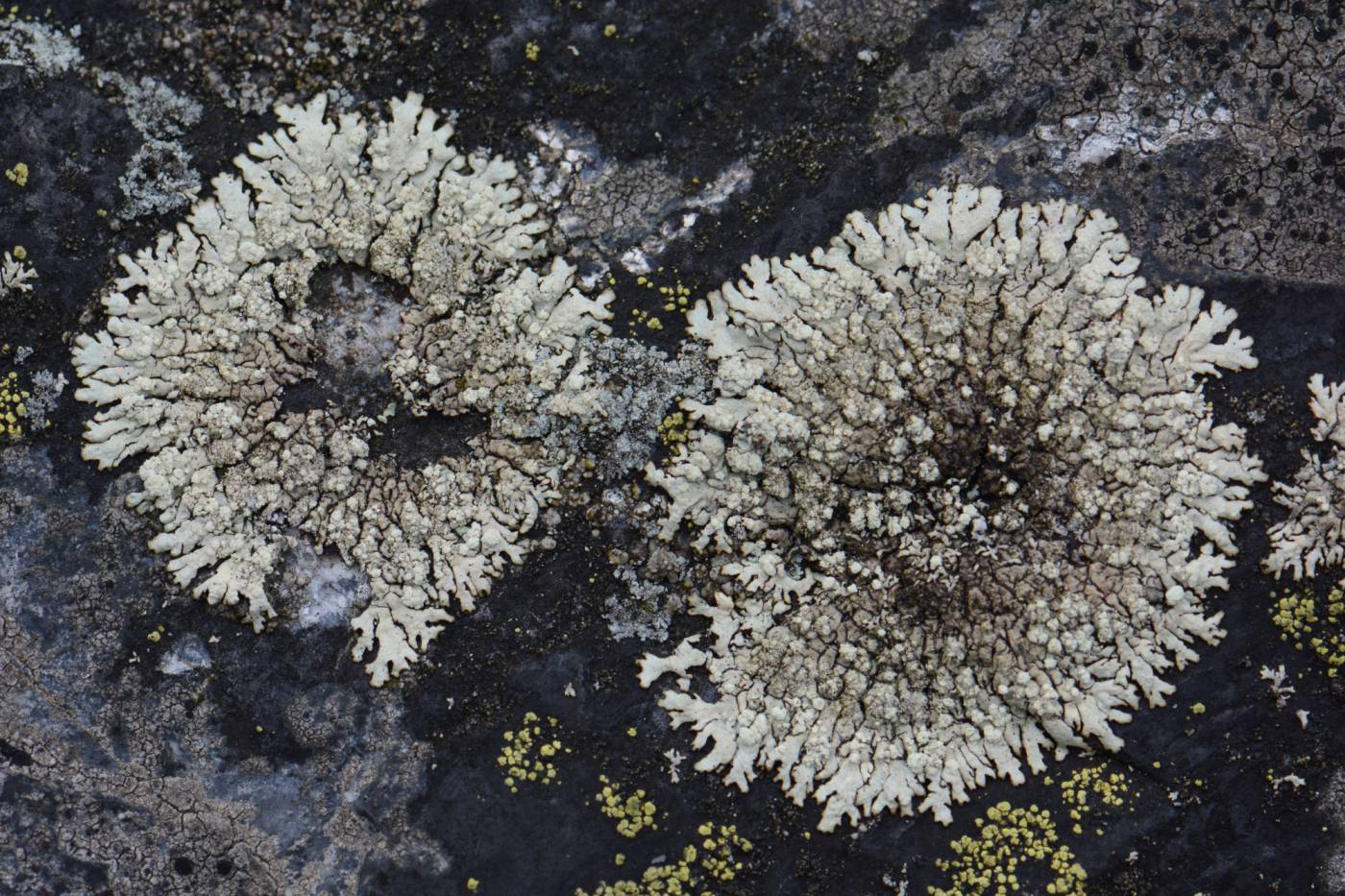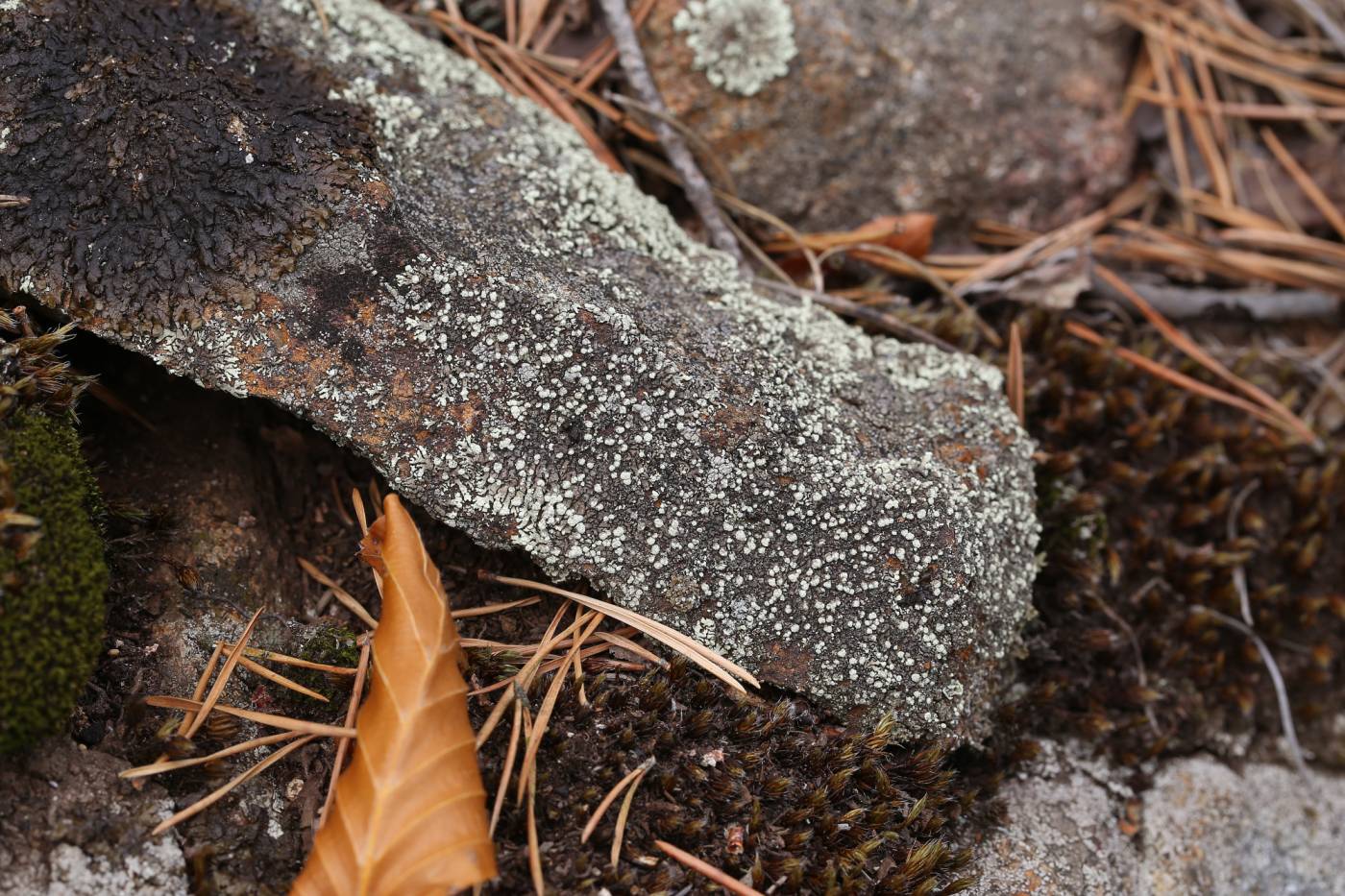A small Xanthoparmelia with a sorediate thallus tightly adpressed to the substrate. Rather than with other Xanthoparmelia species, it might be confused with the more common epiphytic Parmeliopsis ambigua, which might sometimes be also saxicolous and the two species may grow together. They are distinguished by medulla spot reactions; X. mougeotii contains the stictic acid complex (K+ orange) while P. ambigua contains divaricatic acid (K-).
It is a pioneer lichen on hard siliceous rock and stones. The species is often found on smaller stones near the ground. Its distribution in Europe is temperate to boreal-montane with suboceanic tendencies. In the Czech Republic, it is found scattered from the highlands to the mountains only in the west Bohemia, it is very rare further east.
Literature: Suza J. (1950): Další příspěvky k povaze oceánského elementu v lišejníkové flóře střední Evropy. Parmelia mougeotii a Buellia canescens. – Věstník Královské české společnosti nauk 1949/12: 1–30.
taxonomic classification:Ascomycota → Lecanoromycetes → Lecanorales → Parmeliaceae → Xanthoparmelia
Red List (Liška & Palice 2010):EN – endangered
Red List (Malíček 2023):C3 – endangered
Occurrence in the Czech Republic
All records: 32, confirmed 32. One click on a selected square displays particular record(s), including their source(s).


